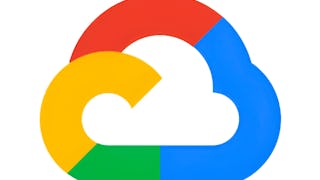Application developers and DevOps professionals must ensure their app works at its best. However, these app may need help with bugs, slow speed, or subpar performance. Professionals need to monitor and observe its performance continually.

Enjoy unlimited growth with a year of Coursera Plus for $199 (regularly $399). Save now.

Monitoring and Observability for Development and DevOps
This course is part of multiple programs.


Instructors: John Rofrano
Top Instructor
16,765 already enrolled
Included with
(96 reviews)
Recommended experience
What you'll learn
Explain the importance of monitoring and describe concepts like Golden Signals
Demonstrate your knowledge of observability with Instana and explain the pillars of observability, cloud native observability, and types of sampling
Implement logging and demonstrate your knowledge of telemetry using OpenTelemetry and tracing using Kubernetes
Develop hands-on experience with a variety of tools such as Prometheus, Grafana, Mezmo (LogDNA), OpenTelemetry, and Instana
Skills you'll gain
Details to know

Add to your LinkedIn profile
15 assignments
See how employees at top companies are mastering in-demand skills

Build your subject-matter expertise
- Learn new concepts from industry experts
- Gain a foundational understanding of a subject or tool
- Develop job-relevant skills with hands-on projects
- Earn a shareable career certificate from IBM

There are 5 modules in this course
This week, you will be introduced to application monitoring, common terms used in monitoring, and why monitoring matters to developers. You'll also learn about the types of monitoring that give you visibility into app performance and connected information technology (IT) systems. You'll become familiar with the four Golden Signals of Monitoring and learn to use the Golden Signals to improve your monitoring systems. Then, you will explore the differences between the Monitoring and Evaluation processes. You'll learn that monitoring is a routine, ongoing process, while evaluation is a long-term process. You'll learn more about the components of monitoring, including metrics, observability, and alerts. You'll also explore the importance of tracking host-based, application, network and connectivity, and server pool metrics. Finally, you'll learn about the need for application monitoring and its importance.
What's included
8 videos2 readings3 assignments1 plugin
This week, you will learn about synthetic monitoring and its importance. You’ll also explore the synthetic monitoring tools, their uses, as well as features. You will gain insights into how application monitoring allows developers to observe applications and how monitoring can provide valuable insights into application performance. You’ll learn about Prometheus and the benefits of using an analytics tool. You’ll also learn about Grafana, which is typically used with Prometheus. You’ll explore how a visualization tool, like Grafana, can organize all of your monitoring data. Additionally, you’ll discover how the right visualization tool can help your organization and that visualization includes many options, like charts, graphs, and timelines. Finally, you’ll learn about alerting, the responsive part of a monitoring system, and you’ll learn about the metric, log, activity log, and smart detection alerts.
What's included
8 videos2 readings3 assignments2 app items2 plugins
In this module, you will explore the concept of application logging and its importance. You will discover the benefits of using log monitoring tools and their features. Further, you will be introduced to distributed logging and tracing techniques. You’ll also learn about the key concepts in distributed tracing and the steps to implement distributed logging. You will explore how to implement logging and the different types of logs. You will gain insight into formatting, parsing, and retention of logs. Further, you will identify the major reasons to store log data. You will explore the analytical dimensions that suggest how long the retention period for log data should be. You will also learn about a few best practices for storing logs. Further, you will explore Mezmo, its use cases, and its features. Finally, you will be introduced to working with Mezmo and the methods for ingesting log data on the Mezmo platform.
What's included
6 videos3 readings4 assignments3 plugins
In this module, you will learn about observability, its benefits, and the three pillars of observability. You’ll explore the concept of cloud native observability, its tools, and the pillars of cloud enterprise observability Further, you will be introduced to the concept of sampling in logging and its advantages and disadvantages and also learn about Instana and its use cases. You will gain insights into Telemetry and explain its importance and benefits. You will discover the working of telemetry and the steps to implement it in application development. You will also differentiate between distributed tracing and telemetry while learning about popular telemetry and distributed tracing tools. You will explore why tracing for container applications is required and the best practices for implementing tracing in application development.
What's included
9 videos3 readings4 assignments1 app item5 plugins
In this module, you’ll complete two practice projects where you'll be able to apply monitoring and observability skills using applicable tools. In the first part, you will create and set up an Instana account to explore the credentials for application and infrastructure monitoring. You will also get the opportunity to create an Instana dashboard and a website and save their credentials for future use. In the next part, you will explore Instana to monitor an application named Robotshop using Docker. You will delve into the process of connecting the Robotshop application with Instana for efficient monitoring and analysis. Using Docker commands in the terminal, you will establish a seamless connection between the Instana dashboard and the Robotshop application. This hands-on practice project will equip you with the knowledge and skills to monitor your application's performance effectively and make data-driven decisions to optimize its efficiency.
What's included
2 readings1 assignment1 app item3 plugins
Earn a career certificate
Add this credential to your LinkedIn profile, resume, or CV. Share it on social media and in your performance review.
Instructors


Offered by
Explore more from Software Development
 Status: Free Trial
Status: Free Trial Status: Free Trial
Status: Free Trial Status: Free Trial
Status: Free TrialGoogle Cloud
 Status: Free Trial
Status: Free Trial
Why people choose Coursera for their career




Learner reviews
96 reviews
- 5 stars
74.74%
- 4 stars
15.15%
- 3 stars
5.05%
- 2 stars
2.02%
- 1 star
3.03%
Showing 3 of 96
Reviewed on Jan 19, 2024
An excellent course to learn mointoring and observability
Reviewed on Jul 17, 2024
A very useful course to dive into the world of DevOps for everyone.

Open new doors with Coursera Plus
Unlimited access to 10,000+ world-class courses, hands-on projects, and job-ready certificate programs - all included in your subscription
Advance your career with an online degree
Earn a degree from world-class universities - 100% online
Join over 3,400 global companies that choose Coursera for Business
Upskill your employees to excel in the digital economy
Frequently asked questions
Basic knowledge of DevOps and software development.
- Basic knowledge of DevOps
- Intermediate-level skills in Python programming
- Intermediate-level skills in working with Containers, Docker, Container Orchestration, OpenShift, and Kubernetes
- Intermediate skills in application development
You will need to sign up for a no-charge GitHub account and use other no-charge tools from IBM in your browser.
More questions
Financial aid available,

